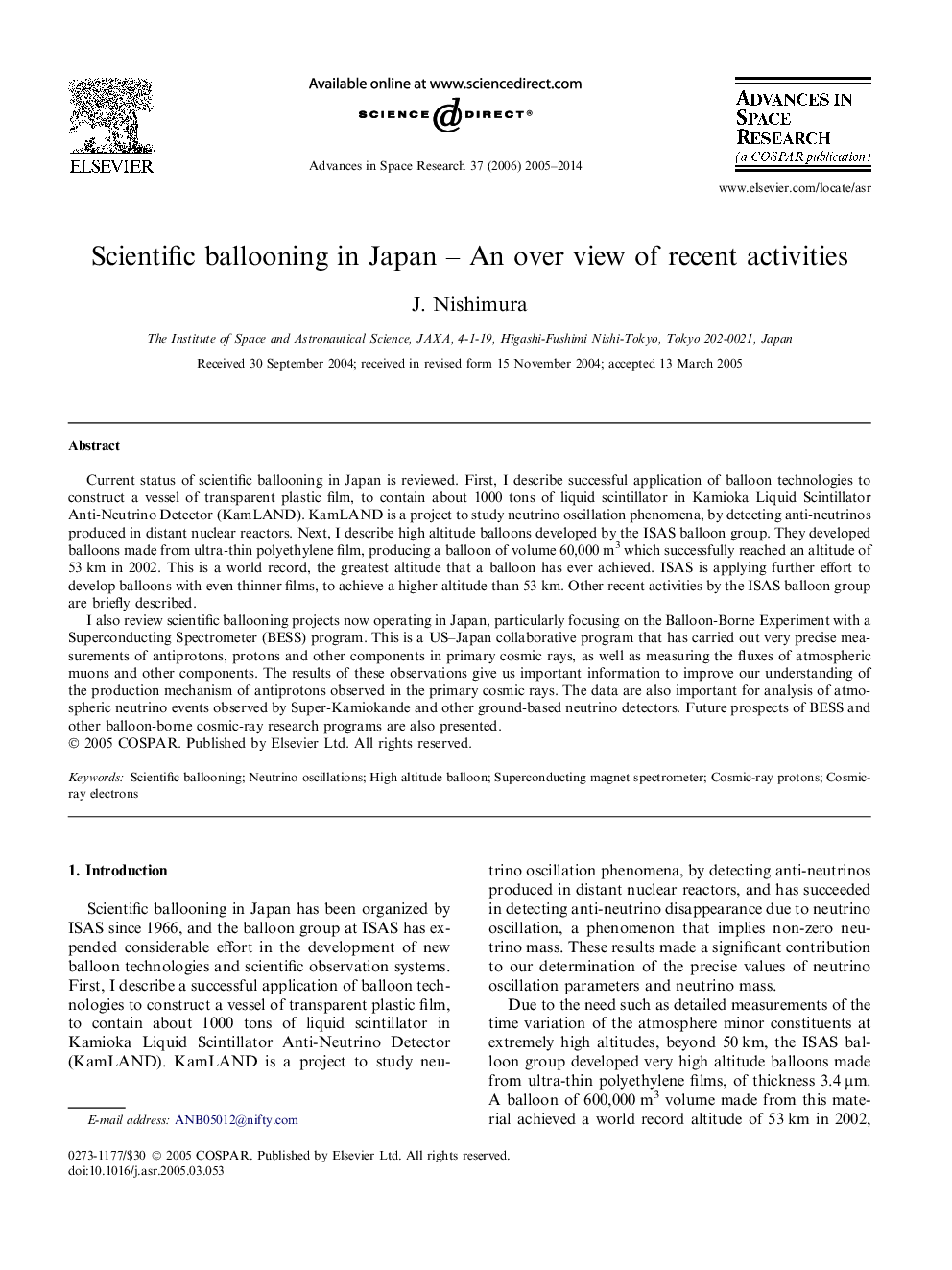| Article ID | Journal | Published Year | Pages | File Type |
|---|---|---|---|---|
| 1769199 | Advances in Space Research | 2014 | 10 Pages |
Current status of scientific ballooning in Japan is reviewed. First, I describe successful application of balloon technologies to construct a vessel of transparent plastic film, to contain about 1000 tons of liquid scintillator in Kamioka Liquid Scintillator Anti-Neutrino Detector (KamLAND). KamLAND is a project to study neutrino oscillation phenomena, by detecting anti-neutrinos produced in distant nuclear reactors. Next, I describe high altitude balloons developed by the ISAS balloon group. They developed balloons made from ultra-thin polyethylene film, producing a balloon of volume 60,000 m3 which successfully reached an altitude of 53 km in 2002. This is a world record, the greatest altitude that a balloon has ever achieved. ISAS is applying further effort to develop balloons with even thinner films, to achieve a higher altitude than 53 km. Other recent activities by the ISAS balloon group are briefly described.I also review scientific ballooning projects now operating in Japan, particularly focusing on the Balloon-Borne Experiment with a Superconducting Spectrometer (BESS) program. This is a US–Japan collaborative program that has carried out very precise measurements of antiprotons, protons and other components in primary cosmic rays, as well as measuring the fluxes of atmospheric muons and other components. The results of these observations give us important information to improve our understanding of the production mechanism of antiprotons observed in the primary cosmic rays. The data are also important for analysis of atmospheric neutrino events observed by Super-Kamiokande and other ground-based neutrino detectors. Future prospects of BESS and other balloon-borne cosmic-ray research programs are also presented.
